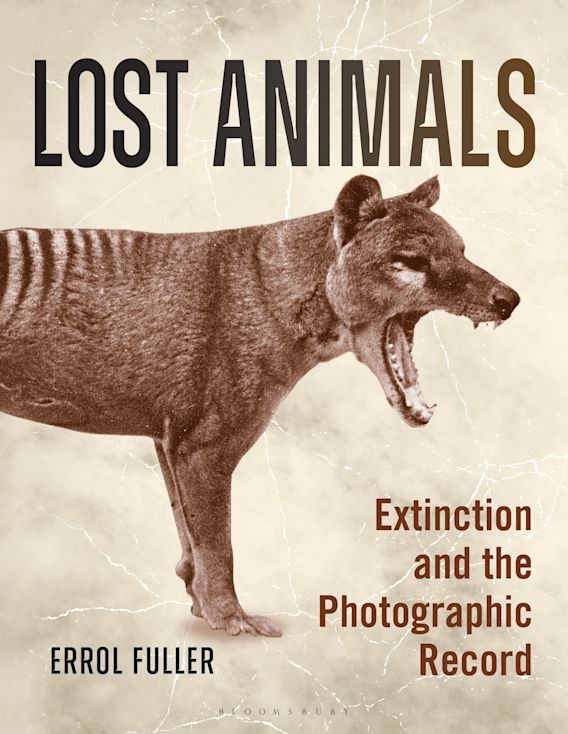
This is a book of photographs of extinct species, so it’s a bit like looking through a very old family album whose subjects you’ve never met but with whom you feel somehow linked through time. All the species are either mammals or birds. Some of the photographs are of poor quality, and many are unsurprisingly black-and-white rather than colour, but that’s hardly surprising given the circumstances under which many were taken. The photographs go back to at least 1864, and although some are of captive animals, many were taken in the wild. They are fascinating, and the less than brilliant quality of some of them just makes us (me at least) value them the more, and feel lucky to have them.
Quaggas, Yangtze River Dolphins and Caribbean Monk Seals feature among the mammals and a Passenger Pigeon named Martha, Eskimo Curlew and Paradise Parrot among the birds. There are some species that were new to me and some that were familiar but they each had a tale to tell and the photographs are important records of the species.
There aren’t many words in this book but they are well-chosen and tell us something about the animals featured, the causes of their extinction, some stories about people involved in studying them or killing them and some information abnout the circumstances of the photographing of the species.
This is the paperback version, just published, of a book origninally published in 2013 so if you have been saving up for a copy, now’s your chance.
And the cover? It’s a photograph of an unfamiliar animal. The animal, a Thylacine, is unfamiliar because it is extinct, and has not been since 1936 when the last captive representative died in a zoo. So the cover makes the point and it is rather striking in any case. 9/10.
Lost animals: extinction and the photographic record by Errol Fuller is published by Bloomsbury.
[registration_form]
I don’t think it has been updated to include the bramble cay melomys.
Great stuff! Way back in 2001 I bought ‘Extinct Birds’ by the same author which relied on artwork rather than photos. It’s a fantastic read. Books on extinct species are fascinating and simultaneously depressing, but one thing that’s extremely satisfying is that sometimes when you’re reading one of these books that’s even a few years old you’ll encounter an ‘extinct’ species in it that’s actually been rediscovered since the original publication – that happens surprisingly often, and it’s marvellous. The debit side is you’ll realise species that have since been declared extinct like the Yangtse dolphin and paddlefish would now be included in it.
I can’t resist mentioning that only a couple of days ago I learned for the very first time that as well as losing giant ground sloths, sabre tooth cats and glyptodonts about 11 to 13,000 years ago south America also lost two genera of large deer Antifer and Morenelaphus. Nearly fifty years of trying to find out everything I could about Pleistocene megafauna and I had absolutely no idea they existed at all. If as very likely they died out as a direct or indirect result of human activity I can’t see why their disappearance is any less noteworthy for happening thousands of years ago than is the loss of the Caribbean monk seal or Thylacine within the last hundred. We really need to see information about these older extinctions being made far more accessible than it is – usually we just have tiny scraps of info here and there you stumble across by accident if you’re lucky. That’s adding insult to injury, virtual oblivion re our awareness as well as extinction as a living entity.
Well would you Adam and Eve it? A few days after getting a few hairs off my chest on this splendid blog about the lack of collation and accessibility re information on the more ancient (probable) human caused extinctions I encountered a wonderful newish website that was set up specifically because of this issue! It’s a definite beginning. It’s been the brainchild of two young Danish guys whose English is probably better than that of a significant proportion of the UK’s adult population. They’ve shown leadership to their ‘peers’ and have also put yours truly in his place by actually doing something about a failing I’ve been moaning about, but made no contribution to solving, since before they were born. https://www.theextinctions.com/morenelaphus